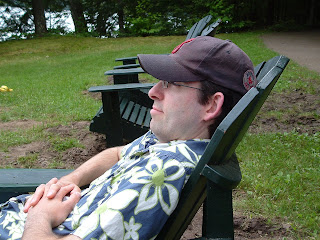There are two strategy games in particular that I have been both 1) craving and 2) playing frequently. And yes, I'd like to be playing them right now! In fact, I'd be up for playing either one three times in a row right now. Seriously.
Stone Age and Ghost Stories are both 2008 releases, which, as it turns out, was an excellent year for board games. The Mrs. is reasonably interested in playing both of these games, which is also a huge plus for me!
- Stone Age is a worker placement game for 2-4 players. In this type of game each player starts with a collection of pieces (the 'workers' in 'worker placement') that they take turns using to claim spaces on a common board. Those board spaces then give the player that claimed them a particular bonus or the ability to use a special action of some kind. Other games in this genre include Age of Empires III and Agricola(another game I particularly enjoy). Stone Age is a great fit for many people since it is pretty straightforward to explain and easy for a new player to pick up, but it really has a great deal of strategic depth that I still have only begun to explore after my 13 plays. Until recently, this was one of those games that I have greatly enjoyed despite my very limited success at it (Through the Ages: A Story of Civilization being the most extreme case of this!), though I have shown considerable improvement over my last four or five plays. Stone Age is a game I've been thinking a lot about lately, considering ways of tweaking my strategy and thinking of how to handle certain situations in the game. As an aside, the playing pieces for Stone Age are often called 'cavemeeples,' a clear reference to the first game to have little wooden pieces meant to resemble people (mini people = meeples), Carcassonne, another game of which I'm quite fond, and incidentally also on the List.
- Ghost Stories is a co-operative game in which players take on the roles of Taoist monks attempting to protect a small village from waves of evil ghosts, demons, spirits, etc., and ultimately defeat their leader, Wu-Feng, who has risen from hell to torment the innocent villagers. Each monk in the game has one of two special abilities at their disposal to lend the team in this goal, and it is critical to the players' success to find creative ways to combine those abilities to win the game. Ghost Stories is highly thematic with excellent, though somewhat cartoon-like art, very challenging (though the difficulty can be increased in subsequent games as the players' skills improve), and extremely satisfying when the team can pool resources and get just enough luck to defeat the incarnation(s) of Wu-Feng. The game is great in almost every way, though I feel like the greatest of its features is how varied the play is each session. There are 10 different incarnations of Wu-Feng, and the players don't know which one (or which four in the higher difficulties) will appear until late in the game. Every time Ghost Stories is played the ghosts will appear in a different order, the village tiles will be randomly arranged, and each monk may have an alternate player power. All these plus the ability to make the game almost impossibly difficult if you are so sadistic to choose to do so, makes Ghost Stories a gem of a game.
Strangely enough, as I review all the raving I've just put down about these excellent board games, I realize that neither one is in my top five favorite games of all time. Perhaps I should be writing a top five games list...


No comments:
Post a Comment